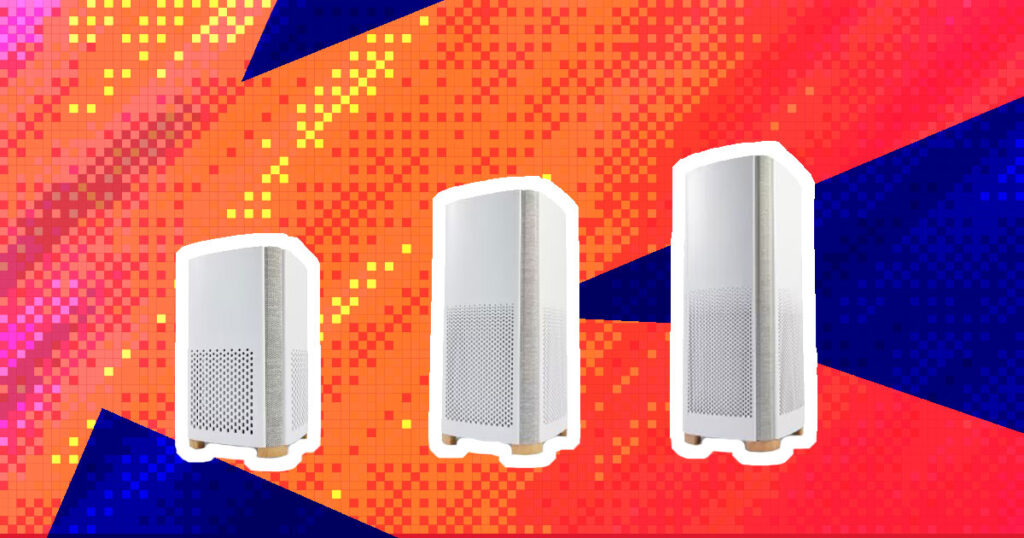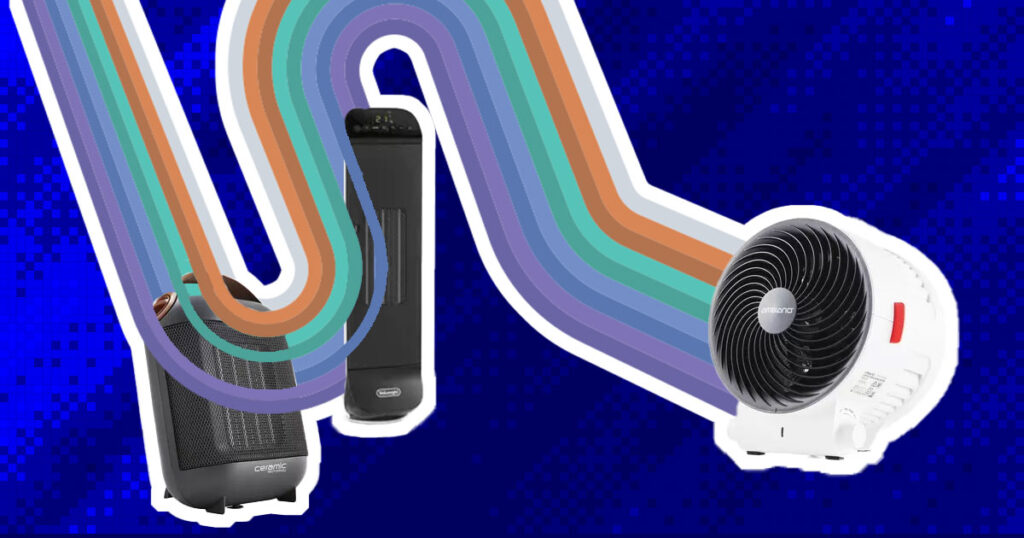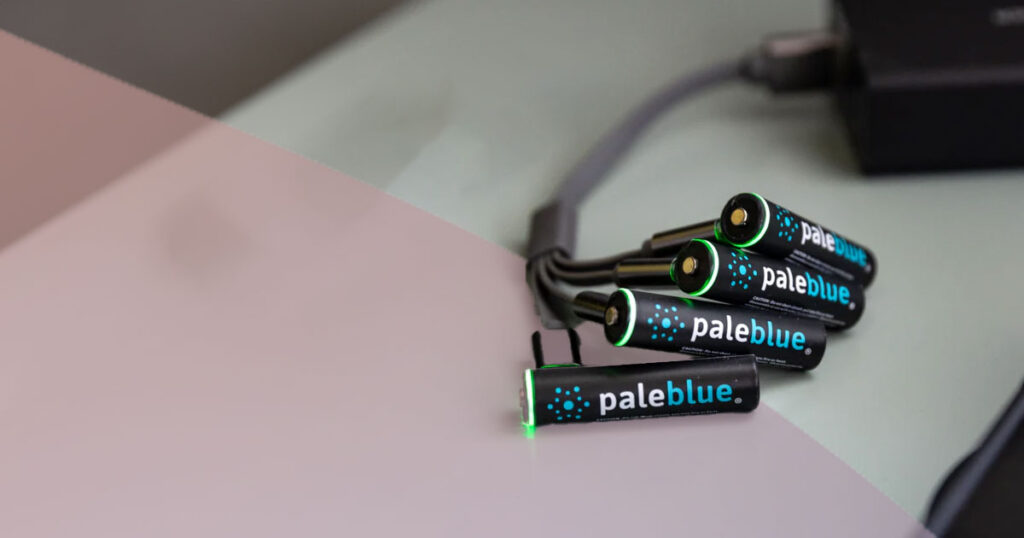The Pixel 7 Pro is a small design evolution but a big leap forward
Google Pixel 7 Pro review: It’s what’s inside that counts
The Pixel 7 Pro hardly comes as a surprise. Google teased the phone at its I/O event back in May. In the intervening time between its announcement and the official launch this month, Google has given us plenty of looks at the phone. In contrast to Apple’s secrecy, Google has spent nearly half a year slowly leaking the Pixel 7 range.
You could be forgiven for the somewhat cynical take that Google was tamping down anticipation rather than building it, getting us all to come to terms with a phone that looked little changed from the Pixel 6 series. But after a week with the 7 Pro, I can say that its subtle refinements on the exterior belie the leap forward it’s taken on the inside.
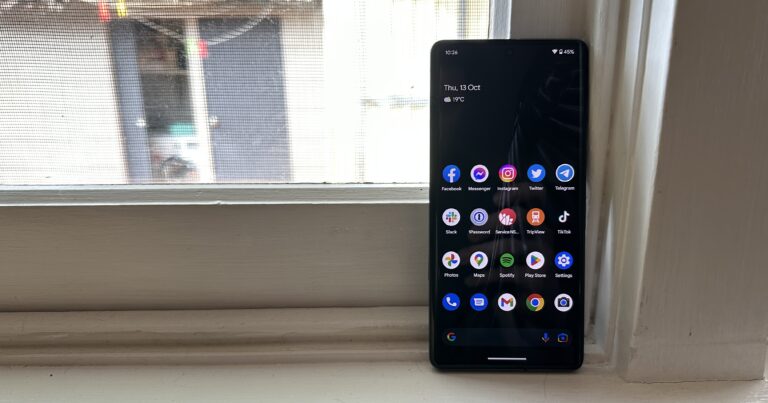
Wondering how the Pixel 7 Pro compares with the Pixel 7 and Pixel 7a? Check out our comprehensive comparison of each new Pixel smartphone.
How much does the Pixel 7 Pro cost in Australia?
The Pixel 7 Pro starts at $1299 in Australia for the 128GB model, which compares well to the similarly-sized iPhone 14 Pro Max at $1899. The price jumps to $1449 for the 256GB model, and tops out at $1599 for 512GB. Below is a look at how each Pixel Pro model compares with the iPhone 14 Pro Max.
Is the Pixel 7 Pro available on a plan?
You can grab the Pixel 7 Pro on a plan from Vodafone or Telstra. You can check out the table below to compare plans that include the Pixel 7 Pro.
If you prefer to buy the phone outright, below is a look at some of the cheapest SIM-only plans available right now.
Pixel 7 Pro design and features
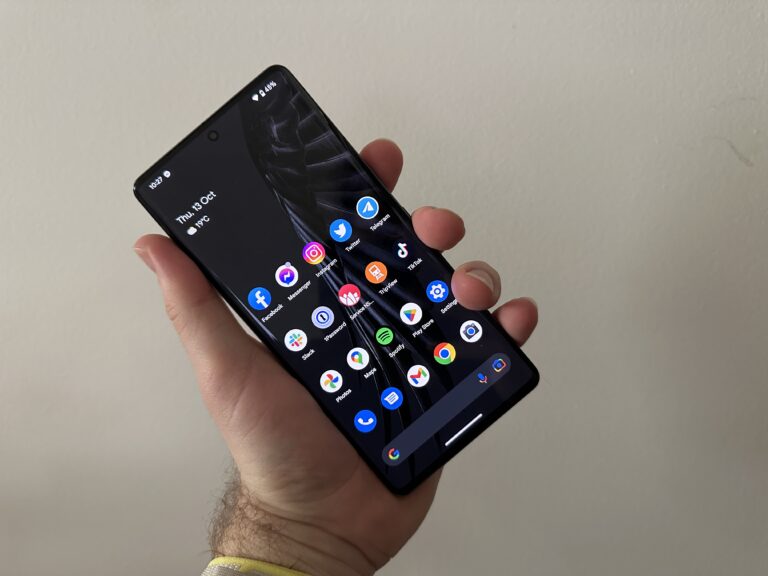
If you’ve seen or owned the Pixel 6 Pro, the 7 Pro is going to look very familiar. It’s a slight design evolution from the 6 Pro; a bit shorter, a bit wider, the screen a bit less curved. The camera bar is better integrated into the body with a polished aluminium facelift. It’s a refined look, but not a considerable departure from the 6 Pro. All in all, it’s the 6 Pro if it got dressed up fancy for a night on the town. If you liked the design of the Pixel 6 Pro, you’ll find a lot to admire in the Pixel 7 Pro.
While it may be impractical, I love the Gorilla Glass front and rear with the smooth feel and nice sheen it gives the phone. But, make no mistake, this is one slippery phone. My Pixel 6, affectionately dubbed Slippy Boi, had a habit of sliding off the arm of the couch and migrating off the bedside table. Its predecessor shares its love of travel, and I swear I’ve seen it inching its way across entirely flat surfaces. That means you’ll need a case for the Pixel 7 Pro, which is a shame, because it’s a beautiful phone.
The Pixel 7 Pro comes preloaded with Android 13. I’m a big fan of Pixel UI’s clean, simple and uncluttered interface, and Android 13 throws a bit more customisation into the mix, though not nearly as much as Apple has introduced with iOS 16. You’re mostly locked into Google’s design ecosystem, which is great if you’re a Material You fan (I am).
Google has also (finally) added facial recognition. You won't be able to do anything more sophisticated than unlock your phone with it, though. For anything requiring a password, you'll still need to use the fingerprint scanner.
While changes from the 6 Pro on the outside may be subtle, the biggest step forward for the Pixel 7 Pro is the Tensor 2 chip. Google has touted major improvements in speech and language processing, battery economy and security. In practice, apps launch quickly and run smoothly, but not noticeably more so than with the Pixel 6’s Tensor 1. The place the Tensor 2’s influence is easiest to see is in the camera.
Pixel 7 Pro camera
Google has gone all-in on its cameras as the unique value proposition of its Pixel phones, so it’s no surprise that the camera is the real star of the Pixel 7 Pro experience. The camera configuration is similar to the Pixel 6 Pro, with a 50MP main lens, a 12MP ultrawide lens and a 48MP telephoto lens. Google has upped the optical zoom on its telephoto lens from 4x to 5x, which actually pips the optical zoom on the iPhone 14 Pro Max.
But, as with the Pixel 6 range, the real factor that sets Google’s photography nous apart from its competitors is the Tensor chip and the way it uses machine learning and AI to process photos after they’re taken. I still get a thrill from taking a stock-standard photo and watching it pop into focus and colour-balance after Tensor 2 gets hold of it.
It also does some amazing work with digital zoom. The Pixel’s 5x telephoto lens already provides pretty unparalleled zoom capabilities, but digital zoom takes its capacity up to 30x. In practice, I was able to get near-perfect clarity in shots at 5x and 10x. At 30x, the cracks start to show. The shots still look amazing on a phone screen, but start to pixellate if blown up any larger. Regardless, it’s a massive leap forward for smartphone zoom capabilities.
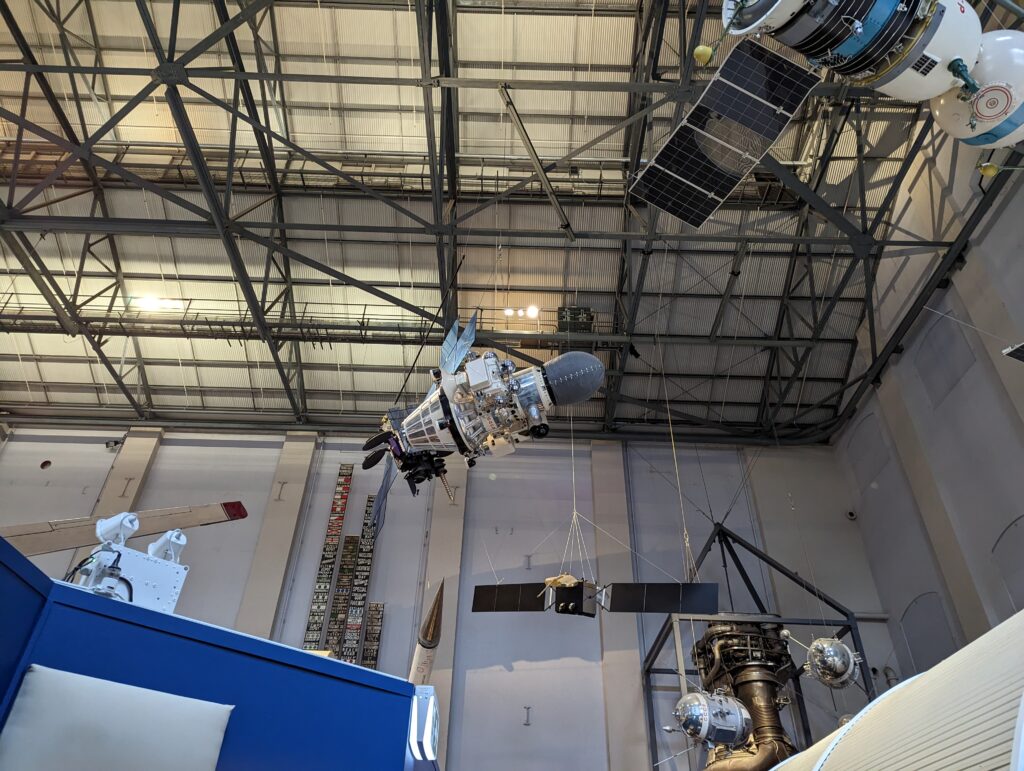
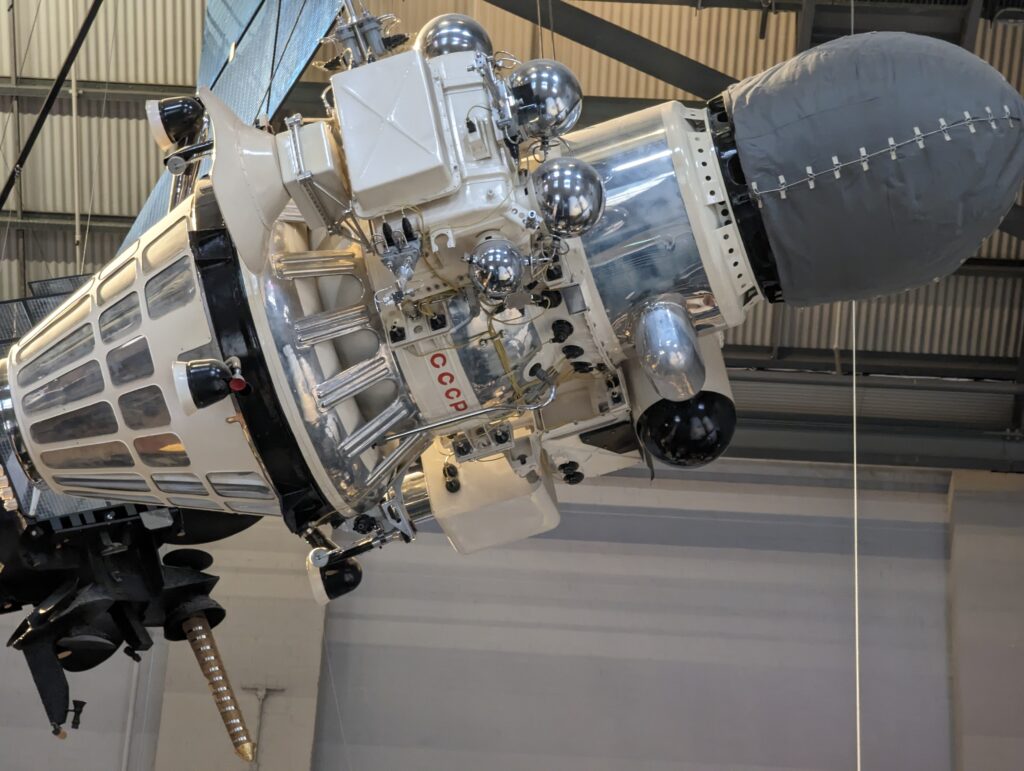






In addition to Pixel 6’s ability to remove people from the background of photos (which still feels like some manner of witchcraft every time I use it), the Pixel 7 also introduces Photo Unblur. This uses the Tensor 2’s AI to take the blur out of photos, even if they weren’t taken on the Pixel. The examples Google has released in its promotional materials are astounding, but I haven’t gotten quite as dramatic results with my photos.
Also improved is Night Sight, which has doubled its shutter speed for less blur and sharper photos. With a young kid at home, it’s pretty rare that I manage to venture out of the house past sundown, but a faster shutter speed is a must for me with night photography, as my shaky hands make shooting at night near impossible. The shutter speed still doesn’t quite match up to the iPhone 14’s Night mode, though.
Where the Pixel 7 Pro really excels is in its Portrait mode. I’ve never seen a phone consistently turn out such beautiful, professional looking shots from simply pointing and shooting in Portrait mode.

On the video side, Google has introduced Cinematic Blur, its answer to Apple’s Cinematic mode. This adds blur to video background, and shoots 24fps at 1080p. It’s a nice effect, though it’d be even nicer to see it in 4K.
Overall, the Pixel continues to produce some of the most stunning photography I’ve seen from a smartphone. In the realm of smartphone photography, Apple and Google are in a perennial two-horse race. Which one you favour largely comes down to what you need out of a smartphone camera. For my very specific use case, Pixel takes the crown with the 7 Pro.
Pixel 7 Pro battery life
The Pixel range’s Achilles heel has always been its battery life. The 7 Pro offers adequate if unexciting battery life. I get about a full day out of a charge with normal use, but regularly end up in the danger zone towards the end of the evening. My Pixel 6 got considerably better battery life after a year than was reported at launch, so I’m hopeful that future software updates might improve battery economy a bit, but it’s disheartening to see a flagship phone that bests the iPhone in so many other categories fall so short of it when it comes to something as practical and important as battery life.
Fortunately, the Pixel 7 Pro supports fast charging, so 30 minutes will get you to around 50%. You’ll need closer to an hour-and-a-half to go from 0% to a full charge. Still, I’d like to see Google give Apple some serious competition on battery economy rather than boasting something as entry level as “all-day battery life”.
Is the Pixel 7 Pro worth buying?
It’d be hard to find a better performing flagship phone at a better value than the Pixel 7 Pro. It’s a great piece of industrial design, and the subtle refinements from the 6 Pro make it a much more elegant looking device. You could make a reasonable argument for its camera being industry-leading, and the case becomes even more compelling when you look at the significant price gap between the 7 Pro and the iPhone 14 Pro Max. As with its predecessors, the Pixel 7 Pro is let down slightly by its less-than-stellar battery life. But given its seriously impressive camera, Android 13’s sleek, uncluttered design and its lower price point, the 7 Pro convinces me I’ll be staying in Google’s device ecosystem for a long time to come.
Related Articles
